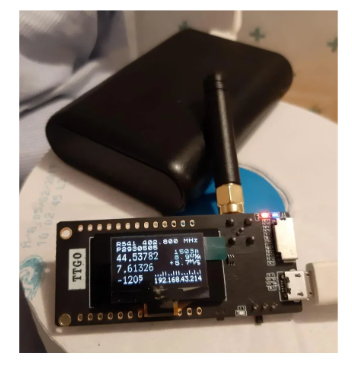Exploring LoRa Communication: Connecting the Unconnected
Exploring LoRa Communication: Connecting the Unconnected
In our increasingly interconnected world, communication technology plays a pivotal role in connecting devices and enabling seamless data exchange. One such innovative technology that has been gaining traction in recent years is LoRa (Long Range) communication. LoRa offers a unique blend of long-range connectivity, low power consumption, and robustness, making it ideal for a wide range of applications, from smart cities to agricultural monitoring. In this blog post, we'll delve into the intricacies of LoRa communication and explore its potential impact on various industries.
Understanding LoRa Technology
LoRa is a wireless communication technology developed to address the challenges of long-range communication with low-power devices. It operates on unlicensed radio bands, allowing for deployment in various regions without the need for regulatory approval. LoRa utilizes chirp spread spectrum modulation, which enables it to achieve long-range communication while consuming minimal power. This modulation technique enables LoRa devices to maintain communication over several kilometers, even in dense urban environments or remote rural areas.
Key Features of LoRa Communication
Long Range: One of the most significant advantages of LoRa technology is its ability to provide long-range communication, spanning several kilometers in ideal conditions. This makes it suitable for applications requiring connectivity over large geographic areas, such as smart agriculture, environmental monitoring, and asset tracking.
Low Power Consumption: LoRa devices are designed to operate on low power, making them ideal for battery-operated or energy-harvesting applications. The efficient use of power allows LoRa devices to achieve extended battery life, sometimes lasting several years on a single battery charge.
Scalability: LoRa networks can accommodate thousands of devices within a single network, making them highly scalable. This scalability is essential for applications that require the deployment of numerous sensors or actuators across a wide area, such as industrial IoT deployments or smart city infrastructure.
Robustness: LoRa communication is robust against interference and obstacles, thanks to its spread spectrum modulation technique. This robustness ensures reliable communication even in challenging environments, where traditional wireless technologies may struggle to maintain connectivity.
Applications of LoRa Communication
Smart Agriculture: LoRa technology enables farmers to monitor environmental conditions, soil moisture levels, and crop health in real-time. By deploying LoRa-enabled sensors across their fields, farmers can make data-driven decisions to optimize irrigation, enhance crop yield, and reduce water consumption.
Smart Cities: LoRa plays a crucial role in building smart city infrastructure by facilitating various applications, including smart parking, waste management, air quality monitoring, and intelligent street lighting. LoRa networks provide cities with the connectivity backbone needed to collect and analyze data for improving urban services and enhancing quality of life for residents.
Industrial IoT: In industrial settings, LoRa technology enables remote monitoring and control of equipment, predictive maintenance, and asset tracking. LoRa-enabled sensors and actuators help industrial organizations optimize their operations, minimize downtime, and reduce maintenance costs by providing real-time insights into equipment performance and health.
Environmental Monitoring: LoRa networks are instrumental in monitoring environmental parameters such as air quality, water quality, and wildlife tracking. Researchers and environmental agencies deploy LoRa-enabled sensors to gather data for studying ecosystems, detecting pollution, and mitigating environmental hazards.
Conclusion
LoRa communication technology holds immense promise for revolutionizing various industries by enabling long-range, low-power connectivity for a myriad of applications. Its unique combination of long-range capability, low power consumption, scalability, and robustness makes it a compelling choice for IoT deployments, smart city initiatives, and environmental monitoring projects. As we continue to witness advancements in IoT and wireless communication technologies, LoRa is poised to play a central role in shaping the future of connected devices and smart systems.





Excellent for use in an emergency!
ReplyDelete